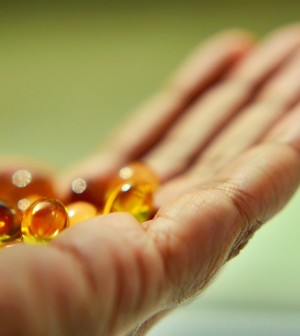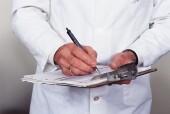- Navigating Your Midlife Crisis: Embracing New Possibilities
- City Raccoons Showing Signs of Domestication
- Mapping the Exposome: Science Broadens Focus to Environmental Disease Triggers
- One Week Less on Social Media Linked to Better Mental Health
- Your Brain Changes in Stages as You Age, Study Finds
- Some Suicide Victims Show No Typical Warning Signs, Study Finds
- ByHeart Formula Faces Lawsuits After Babies Sickened With Botulism
- Switch to Vegan Diet Could Cut Your Greenhouse Gas Emissions in Half
- Regular Bedtime Does Wonders for Blood Pressure
- Dining Alone Could Mean Worse Nutrition for Seniors
Free Drug Samples for Doctors Might Prove Costly for Patients


Dermatologists who receive free drug samples are more likely to give their patients prescriptions for expensive medicines, a new study says.
Researchers looked at data on prescriptions for adult acne medications written in 2010 by dermatologists across the United States.
For a single visit, the average retail cost of prescriptions for patients whose doctors received free samples from drug makers was about $465, compared with about $200 for patients whose doctors did not receive free samples, the study found.
Brand name drugs and “branded generics” — off-patent drugs that have different dosages or new formulations and are sold under a new name — accounted for 79 percent of prescriptions written by dermatologists nationwide, the study showed.
In contrast, such drugs only accounted for 17 percent of prescriptions written by doctors at an academic medical center that doesn’t allow its doctors to accept free drug samples, researchers found.
Brand name drugs and branded generics have similar retail prices, while generic drugs are cheaper, noted the authors of the study published April 16 in the journal JAMA Dermatology.
Among other medical specialties, the percentage of prescriptions written with a free drug sample decreased from 7 percent in 2001 to 4 percent in 2010, according to study background information. But the percentage increased among dermatologists during that time, from 12 percent to 18 percent, the new study found.
“Physicians may not be aware of the cost difference between brand-name and generic drugs, and patients may not realize that, by accepting samples, they could be unintentionally channeled into subsequently receiving a prescription for a more expensive medication,” study senior author Dr. Alfred Lane, emeritus professor of dermatology and of pediatrics at Stanford University, said in a university news release.
He and his colleagues said their findings contribute to the debate about whether free drug samples are helpful or cause doctors to favor more expensive brand name drugs instead of generic drugs, thereby increasing costs for patients and health insurers.
Previous research has found that drug companies give about $16 billion in free drug samples to doctors every year, the news release noted.
“Many physicians believe that free samples have both benefits and drawbacks,” study first author Michael Hurley, a Stanford medical student, said in the news release.
“Primarily, they feel that the samples give them more freedom and flexibility to help people who are uninsured, or with less financial means,” Hurley said. “But the national data don’t really support that. Those people are not the ones who are typically getting these samples.”
More information
The U.S. Food and Drug Administration has more about generic medications.
Source: HealthDay
Copyright © 2025 HealthDay. All rights reserved.










